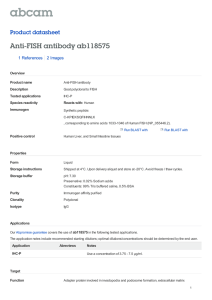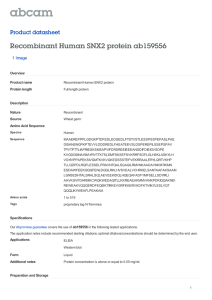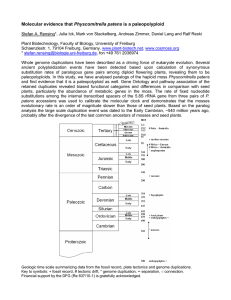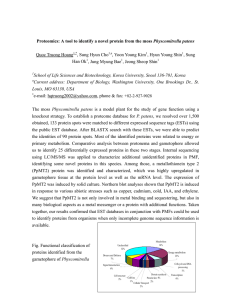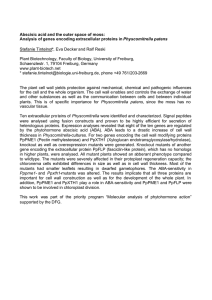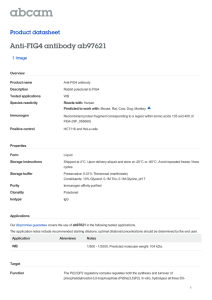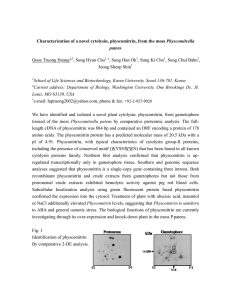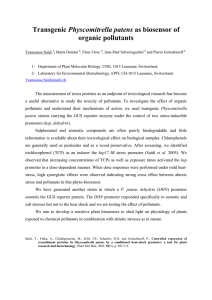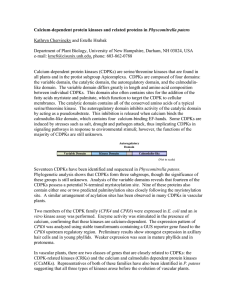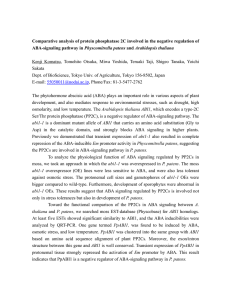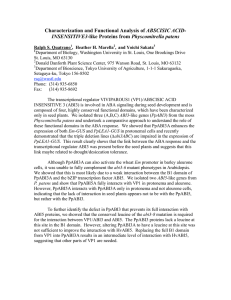Isolation and preliminary characterization of ... Physcomitrella patens
advertisement
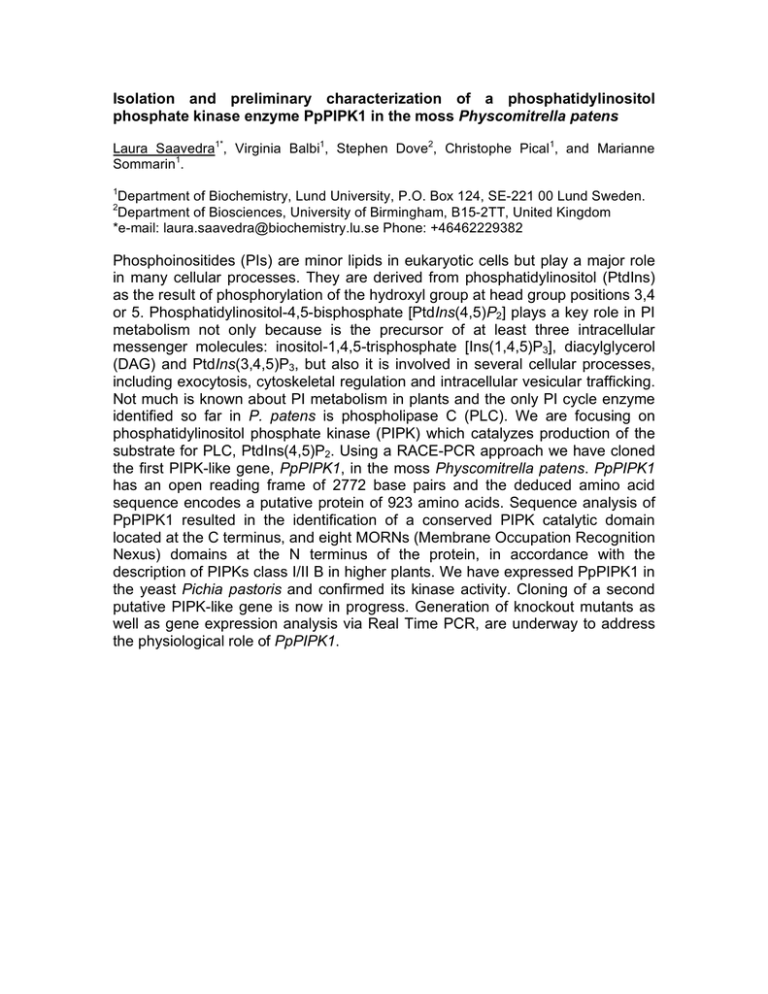
Isolation and preliminary characterization of a phosphatidylinositol phosphate kinase enzyme PpPIPK1 in the moss Physcomitrella patens Laura Saavedra1*, Virginia Balbi1, Stephen Dove2, Christophe Pical1, and Marianne Sommarin1. 1 Department of Biochemistry, Lund University, P.O. Box 124, SE-221 00 Lund Sweden. Department of Biosciences, University of Birmingham, B15-2TT, United Kingdom *e-mail: laura.saavedra@biochemistry.lu.se Phone: +46462229382 2 Phosphoinositides (PIs) are minor lipids in eukaryotic cells but play a major role in many cellular processes. They are derived from phosphatidylinositol (PtdIns) as the result of phosphorylation of the hydroxyl group at head group positions 3,4 or 5. Phosphatidylinositol-4,5-bisphosphate [PtdIns(4,5)P2] plays a key role in PI metabolism not only because is the precursor of at least three intracellular messenger molecules: inositol-1,4,5-trisphosphate [Ins(1,4,5)P3], diacylglycerol (DAG) and PtdIns(3,4,5)P3, but also it is involved in several cellular processes, including exocytosis, cytoskeletal regulation and intracellular vesicular trafficking. Not much is known about PI metabolism in plants and the only PI cycle enzyme identified so far in P. patens is phospholipase C (PLC). We are focusing on phosphatidylinositol phosphate kinase (PIPK) which catalyzes production of the substrate for PLC, PtdIns(4,5)P2. Using a RACE-PCR approach we have cloned the first PIPK-like gene, PpPIPK1, in the moss Physcomitrella patens. PpPIPK1 has an open reading frame of 2772 base pairs and the deduced amino acid sequence encodes a putative protein of 923 amino acids. Sequence analysis of PpPIPK1 resulted in the identification of a conserved PIPK catalytic domain located at the C terminus, and eight MORNs (Membrane Occupation Recognition Nexus) domains at the N terminus of the protein, in accordance with the description of PIPKs class I/II B in higher plants. We have expressed PpPIPK1 in the yeast Pichia pastoris and confirmed its kinase activity. Cloning of a second putative PIPK-like gene is now in progress. Generation of knockout mutants as well as gene expression analysis via Real Time PCR, are underway to address the physiological role of PpPIPK1.
